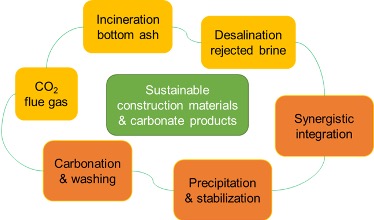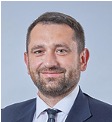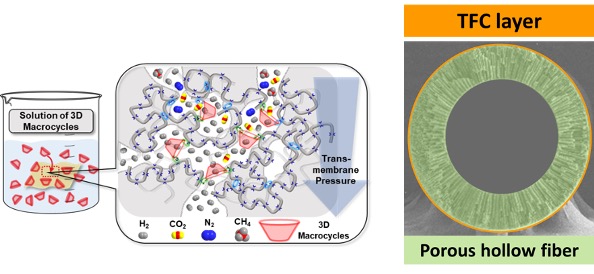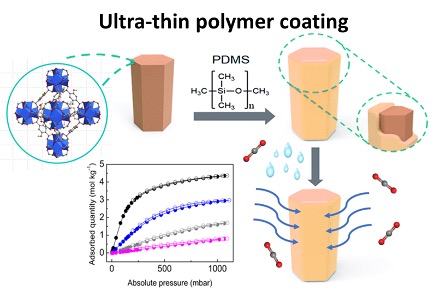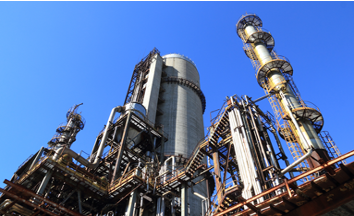If successful: Produce molecular hydrogen directly from the Sun and the seawater, thus mitigating contemporary energy and environmental challenges
List of Publications:
- Xingyun Li, Liangping Xiao, Ling Zhou, Qingchi Xu, Jian Weng, Jun Xu*, Bin Liu.* Adaptive Bifunctional Electrocatalyst of Amorphous CoFe Oxide @2D Black Phosphorus for Overall Water Splitting. Angew.Chem. Int. Ed. 2020, 59,21106. https://doi.org/10.1002/anie.202008514.
Brief description: In this work, by growing amorphous multi-transition-metal (cobalt and iron) oxide on two-dimensional (2D) black phosphorus (BP), we develop a bifunctional electrocatalyst (CoFeO@BP), which is able to efficiently catalyze both HER and OER.
Brief description: In this review, we focus on the recently developed strategies of single atom catalyst (SAC) synthesis, with attention on the microenvironment modulation of single-atom active sites of SACs. Experimental and computational advances in understanding such microenvironment in association to the catalytic activity and mechanisms are summarized and exemplified in the electrochemical applications, including the water electrolysis and O2/CO2/N2 reduction reactions.
- Qilun Wang , Cong-Qiao Xu*, Wei Liu, Sung-Fu Hung, Hong Bin Yang*, Jiajian Gao , Weizheng Cai, Hao Ming Chen, Jun Li & Bin Liu.* Coordination engineering of iridium nanocluster bifunctional electrocatalyst for highly efficient and pH-universal overall water splitting. Nature Communications volume 11, Article number: 4246 (2020). https://www.nature.com/articles/s41467-020-18064-w.pdf.
Brief description: In this work, we report uniformly dispersed iridium nanoclusters embedded on nitrogen and sulfur co-doped graphene as an efficient and robust electrocatalyst for both HER and OER at all pH conditions.
- Jiajian Gao, Xiang Huang, Weizheng Cai, Qilun Wang, Chunmiao Jia, and Bin Liu.* Rational Design of an Iridium–Tungsten Composite with an Iridium-Rich Surface for Acidic Water Oxidation. ACS Appl. Mater. Interfaces 2020, 12, 23, 25991. https://pubs.acs.org/doi/10.1021/acsami.0c05906.
Brief description: In this work, we design iridium–tungsten composites with a metallic tungsten-rich core and an iridium-rich surface by the sol–gel method followed by hydrogen reduction. The thus obtained iridium–tungsten catalyst shows much higher intrinsic water oxidation activity (100 mA/mgIr at an overpotential of 290 mV) and stability (100 h at 10 mA/cm2geom) together with reduced iridium content (33 wt % only) as compared with pure iridium oxide.
- Weizheng Cai, Rong Chen, Hongbin Yang, Hua Bing Tao, Hsin-Yi Wang, Jiajian Gao, Wei Liu, Song Liu, Sung-Fu Hung, Bin Liu.* Amorphous versus Crystalline in Water Oxidation Catalysis: A Case Study of NiFe Alloy. Nano Lett. 2020, 20, 6, 4278. https://doi.org/10.1021/acs.nanolett.0c00840 .
Brief description: Catalytic water splitting driven by renewable electricity offers a promising strategy to produce molecular hydrogen, but its efficiency is severely restricted by the sluggish kinetics of the anodic water oxidation reaction. Amorphous catalysts are reported to show better activities of water oxidation than their crystalline counterparts, but little is known about the underlying origin, which retards the development of high-performance amorphous oxygen evolution reaction catalysts. Herein, on the basis of cyclic voltammetry, electrochemical impedance spectroscopy, isotope labeling, and in situ X-ray absorption spectroscopy studies, we demonstrate that an amorphous catalyst can be electrochemically activated to expose active sites in the bulk thanks to the short-range order of the amorphous structure, which greatly increases the number of active sites and thus improves the electrocatalytic activity of the amorphous catalyst in water oxidation.




